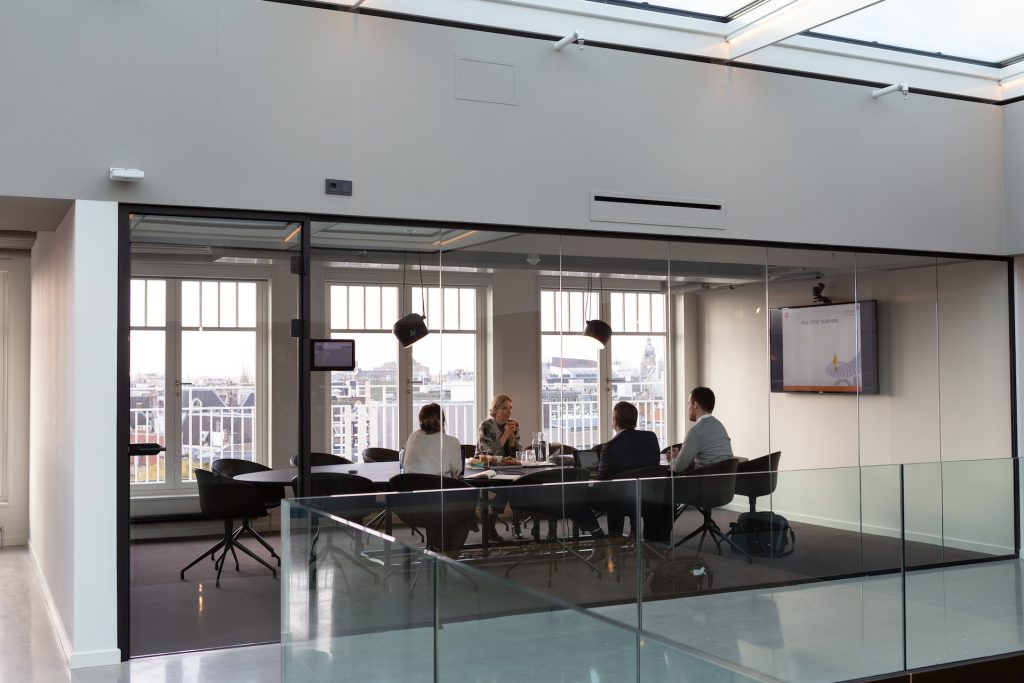
What Is The Waterfall Model In Software Development?
Julian Wallis
13 min read

In the world of software development, various methodologies and approaches have been adopted to streamline the development process and deliver high-quality software solutions. One such traditional methodology is the waterfall model.
In this blog post, we explore the waterfall model, its principles, how it works, and the factors businesses should consider when deciding to adopt it. We also delve into the tools and frameworks commonly associated with it and the guidelines for implementing it in your own company.
What Is The Waterfall Model? 🌊
The waterfall model is a sequential software development process that follows a linear and systematic approach. It is called the “waterfall” model because the progress flows steadily downward, similar to a waterfall, with each phase dependent on the completion of the previous one.
One of the key characteristics of the waterfall model is its strict linear progression, where each phase must be completed before moving on to the next. This can be advantageous in projects with well-defined and stable requirements, as it allows for thorough planning and documentation. However, it can also be inflexible when changes or adjustments are needed during the development process, as going back to previous stages can be time-consuming and costly.
It’s important to note that while the waterfall model has been widely used in the past, many software development methodologies, such as the agile methodology and other iterative approaches, have gained popularity in recent years due to their flexibility and adaptability to changing requirements.
Principles Of The Waterfall Model 💡
The waterfall model is a traditional software development methodology that follows a sequential and linear approach. It consists of several distinct phases that must be completed in a specific order. Here are the key principles of the waterfall model.
- The waterfall model follows a sequential structure, where each phase is completed before moving on to the next one. This means that progress flows downwards, like a waterfall, without any backward movement.
- The initial phase involves gathering and documenting all the requirements of the software project. This includes understanding the needs of the stakeholders and defining the system’s functionality and scope.
- Once the requirements are defined, the design phase begins. In this phase, the software architecture and system design are developed. It involves creating detailed technical specifications and deciding on the hardware and software requirements.
- The implementation phase involves coding the software based on the design specifications. Developers write the code, integrate different components, and create the system based on the defined design.
- After the implementation phase, thorough testing is conducted to ensure that the software functions as intended. This includes various types of testing, such as unit testing, integration testing, system testing, and user acceptance testing.
- Once the software has successfully passed the testing phase, it is deployed to the production environment. This involves installing the software on the end-user’s systems or making it accessible through a network.
- The final phase of the waterfall model is maintenance. This phase focuses on addressing any issues or bugs that arise in the deployed software. Updates and enhancements may also be made during this phase to improve the system’s performance or add new features.
- Throughout the entire process, documentation plays a vital role. Each phase requires thorough documentation to capture the project’s progress, decisions made, and any issues encountered. Documentation helps with knowledge transfer, future maintenance, and understanding the system’s design and functionality.
It’s important to note that the waterfall model assumes that requirements are well-defined and unlikely to change significantly during the development process. However, it lacks flexibility in adapting to changing requirements, which led to the emergence of more iterative and agile approaches in software development.
How Does The Waterfall Model Work? ⚙️
The waterfall model emphasises a linear, sequential flow of activities, where each phase is completed before moving on to the next one. This approach assumes that requirements are well-defined and unlikely to change significantly throughout the development process. It can be suitable for projects with stable and clearly defined requirements but may face challenges when changes are needed later in the development cycle.
The waterfall model typically consists of the following sequential phases.
- Requirements Gathering: The project requirements are defined by consulting with stakeholders, gathering information, and determining the scope of the software.
- System Design: In this phase, the overall system architecture and design are created based on the gathered requirements. It involves identifying components, databases, interfaces, and other system elements.
- Implementation: The design is implemented in this phase, with programmers writing the code for the software. It involves converting the design into executable code.
- Testing: The developed software undergoes thorough testing to identify any defects or bugs. This phase ensures the software meets the specified requirements and functions as intended.
- Deployment: Once the software passes the testing phase, it is deployed to the target environment or users. Installation, configuration, and data migration may be included in this phase.
- Maintenance: After deployment, the software enters the maintenance phase, where any issues, bugs, or enhancements are addressed. Updates, patches, and support may be provided as necessary.
You can check out Waterfall vs Agile vs Scrum if you want to see how it’s unique from those software project management approaches.
🛰️ Implementation Example: NASA
NASA is an example of a company that has effectively used the waterfall model in software development. NASA’s software development processes strictly adhere to the waterfall model due to the critical nature of their programs, where the slightest error or mistake can result in catastrophic consequences.
For instance, the software for the Space Shuttle program was developed using the waterfall model, as it required precise and dependable functionality. The software went through a complete life cycle with different stages, including planning, design, development, and testing, before being released. The rigorous testing and documentation processes ensured that the software was free of errors and met the set requirements.

Moreover, NASA’s experience and expertise in using the waterfall model have helped them with other projects, such as the Mars Rover mission, where the software development followed the same approach. The software development for the mission was completed with great success and did not cause any complications during deployment.
Thus, NASA’s successful implementation of the waterfall model in software development demonstrates that the model can be effective if applied to the right projects with clearly defined requirements and a high degree of criticality. However, it also highlights the importance of considering the limitations of the model and its adaptability to changing scenarios.
Tools & Frameworks Used 🧰
In the waterfall model of software development, various tools and frameworks can be used to facilitate the different phases and activities. Here are some commonly used tools and frameworks.
- Requirements Management Tools: Tools like IBM Rational DOORS, JIRA, or Microsoft Azure DevOps can be employed for effectively capturing, managing, and tracking requirements throughout the development process. These tools help maintain a central repository for requirements documentation and enable collaboration among team members.
- Design Tools: Designing software architecture and creating technical specifications may involve using tools like Enterprise Architect, Lucidchart, or Microsoft Visio. These tools provide diagramming capabilities, allowing developers to visually represent system designs, data models, and component interactions.
- Integrated Development Environments (IDEs): IDEs like Eclipse, Microsoft Visual Studio, or JetBrains IntelliJ IDEA are used during the implementation phase. These IDEs offer a comprehensive set of features, such as code editors, debugging tools, and build systems, to support software development in specific programming languages.
- Version Control Systems (VCS): Version control systems like Git, Subversion (SVN), or Mercurial enable teams to manage and track changes to source code and project files. These tools facilitate collaboration, allow for concurrent development, and provide mechanisms to revert to previous versions if needed.
- Testing Tools: Various testing tools are employed to ensure software quality and verify system functionality. Examples include JUnit for unit testing in Java, Selenium for automated web testing, and LoadRunner for performance testing. These tools assist in executing tests, generating test reports, and identifying and tracking defects.
- Project Management Tools: Project management tools such as Microsoft Project, Atlassian JIRA, or Trello can be used to plan, schedule, and monitor project activities. These tools help track progress, allocate resources, and manage dependencies between tasks in a waterfall project.
- Documentation Tools: Documentation plays a crucial role in the waterfall model. Tools such as Microsoft Word, Confluence, or Google Docs can be utilised to create and maintain project documentation, including requirements documents, design specifications, user manuals, and test plans.
It’s important to note that the specific tools and frameworks used in the waterfall model can vary depending on the organisation’s preferences, project requirements, and the software development technologies employed.
Should Your Business Adopt The Waterfall Model? 🕵
The decision to adopt the waterfall model for software development depends on various factors specific to your business and project requirements. While the waterfall model has been widely used in the past, it is important to consider its advantages and limitations before making a decision.

🎖️ The Benefits Of The Waterfall Model
- Clear Structure: The waterfall model provides a well-defined and structured approach to software development. It can be suitable for projects with stable and clearly defined requirements, where a sequential and linear development process is appropriate.
- Comprehensive Documentation: The waterfall model emphasises documentation at each phase, which can be advantageous for regulatory compliance, knowledge transfer, and future maintenance or enhancements.
- Project Planning: The linear nature of the waterfall model allows for detailed project planning upfront. This can be beneficial for managing resources, setting clear milestones, and estimating project timelines and costs.
🚧 The Challenges Of Using The Waterfall Model
- Lack Of Flexibility: The waterfall model is not well-suited for projects with evolving or ambiguous requirements. It does not easily accommodate changes during the development process, which can lead to challenges if requirements change or new insights emerge.
- Late Feedback: Since testing typically occurs towards the end of the development cycle in the waterfall model, there may be limited opportunities for early feedback and validation. This can result in a higher risk of discovering defects or issues late in the process.
- Limited Stakeholder Involvement: Stakeholder involvement is usually limited to the initial requirements-gathering phase in the waterfall model. This can lead to reduced collaboration and potential misalignment between the final product and stakeholders’ evolving needs.
Also, consider factors like the stability of requirements, the need for flexibility and adaptability, the level of stakeholder involvement, and the nature of the software being developed. This will help determine whether the waterfall model aligns with your business goals and project needs or if alternative methodologies might be more suitable.
How To Implement The Waterfall Methodology 👨🔧
To successfully implement the waterfall methodology in software development, consider the following guidelines.
🔎 Clear & Comprehensive Requirements
Invest ample time and effort in gathering and documenting detailed requirements upfront. Ensure that the requirements are well-defined, unambiguous, and agreed upon by all stakeholders. Clear communication and collaboration are key to avoid misunderstandings later in the development process.
📅 Thorough Planning
Create a comprehensive project plan that outlines the activities, milestones, and deliverables for each phase of the waterfall model. Define clear dependencies and allocate resources accordingly. Set realistic timelines and ensure that the plan is communicated and understood by all team members.
🗃️ Documentation
Create detailed technical specifications, system architectures, and design documents. Ensure that the design aligns with the defined requirements and that all aspects of the software solution are considered. Document decisions, changes, and issues encountered during each phase, and keep the documentation updated throughout the project.
💬 Communication
Establish effective communication channels within the team and with stakeholders to ensure clear and timely information exchange. Regularly share progress updates, reports, and documentation with all relevant parties.

🌘 Dedicated Phases With Milestones
Divide the project into distinct phases, such as requirements gathering, design, implementation, testing, deployment, and maintenance. Each phase should have well-defined entry and exit criteria and clear milestones to track progress. Review and validate each milestone before proceeding to the next phase.
🏆 Attention To Quality Assurance
Place significant emphasis on testing and quality assurance activities. Develop a comprehensive test plan that covers different types of testing, including unit testing, integration testing, system testing, and user acceptance testing. Execute tests meticulously to identify and address defects early on.
🚨 Risk Management
Identify and assess potential risks early in the project. Develop mitigation strategies and contingency plans to address any risks that may impact the project’s success. Regularly review and monitor risks throughout the project lifecycle.
💫 Change Management
As the waterfall model assumes limited changes during development, establish a change management process to handle any requested modifications. Ensure change requests are properly evaluated, documented, and approved before incorporating them into the project. Assess the impact of changes on the project schedule, resources, and budget.
🎯 Skilled & Dedicated Team
As the waterfall model follows a sequential approach, having a skilled and dedicated team is crucial. Assign team members with expertise in the relevant technologies, and ensure they have a clear understanding of their roles and responsibilities throughout the project.
📈 Continuous Improvement
Regularly evaluate the project’s progress, adherence to the waterfall model, and the effectiveness of the implemented processes. Learn from any challenges or mistakes encountered and make adjustments for future projects.
Remember that the waterfall model is best suited for projects with stable and well-defined requirements. Adaptations may be required to incorporate feedback or changes that arise during the development process. Regular communication, flexibility, and adaptability can help overcome potential limitations and ensure a successful implementation of the waterfall methodology.
Key Takeaways: What Is The Waterfall Model? 📋
The waterfall model has played a significant role in the history of software development, offering a structured and sequential approach to project management. Throughout this blog post, we have explored the fundamental aspects of the waterfall model, including its definition, principles, functioning, and real-world implementation.
By following a linear progression through distinct phases, businesses can benefit from a clear structure, comprehensive documentation, and thorough planning. Companies like Oracle Corporation have successfully utilised the waterfall model for large-scale software projects, demonstrating its applicability in certain contexts.
To support the waterfall model, various tools and frameworks come into play. Requirements management tools, design tools, integrated development environments (IDEs), testing tools, project management tools, and documentation tools can assist in different stages of the development process, promoting efficiency and collaboration.
However, businesses should carefully consider whether the waterfall model aligns with their project requirements and organisational context. Factors such as the stability of requirements, the need for flexibility, stakeholder involvement, and the dynamic nature of the industry should be evaluated. Agile and iterative methodologies have gained popularity due to their adaptability and responsiveness to changing circumstances.
Should a business decide to adopt the waterfall model, successful implementation relies on key considerations and best practices. Clear and comprehensive requirements, thorough planning, meticulous design and documentation, quality assurance through testing, effective communication, risk management, and a skilled team contribute to achieving desired outcomes. Regular evaluation and continuous improvement also foster success.
To conclude, while the waterfall model remains a valid approach for certain projects, businesses must weigh its benefits and limitations against their specific needs. By understanding the principles, examining real-world examples, considering the tools and frameworks available, and implementing the model effectively, businesses can make informed decisions and navigate the complexities of software development with confidence.
Unlock the potential of your business with custom technology solutions from our team of experts. We’ll work with you to find the perfect approach tailored to your unique challenges. Book a discovery call now and revolutionise the way you work!
Topics
Published On
May 29, 2023

